Best Linux Server Monitoring Tools
By Alex Carter on November 1, 2024
Monitoring Linux servers is a necessary task for maintaining system stability, performance, and security. It involves keeping track of server status, resource usage, network traffic, and application performance to detect issues early and prevent potential disruptions.
While Linux includes built-in tools for basic monitoring, manually checking several servers or huge infrastructure may be time-consuming and wasteful. Many monitoring tools exist to help with this process, including real-time data, automatic alarms, and thorough visual reports.
When choosing monitoring tools, it’s also helpful to understand the differences in managing Linux vs Windows server systems, as each has unique requirements and features.
Essential Server Monitoring Solutions for Performance and Uptime
Better Uptime
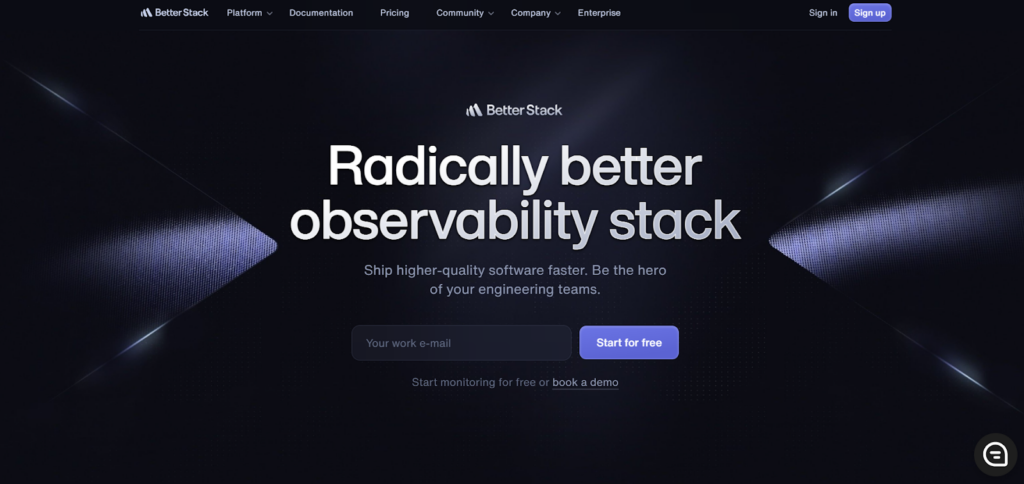
Better Uptime is a monitoring service designed to notify you whenever your server experiences downtime due to any issue, ensuring constant uptime through continuous monitoring.
Beyond basic uptime checks, it offers alerts for specific conditions such as high CPU, RAM, or disk usage, failed cron jobs, and database backup failures. It provides full infrastructure monitoring with the ability to add team members and configure an on-call schedule. Notifications can be sent via email, SMS, or phone calls.
Better Uptime offers a free plan, with advanced features available under the Pro account. It has proven to be a reliable and efficient solution for monitoring server performance.
Datadog
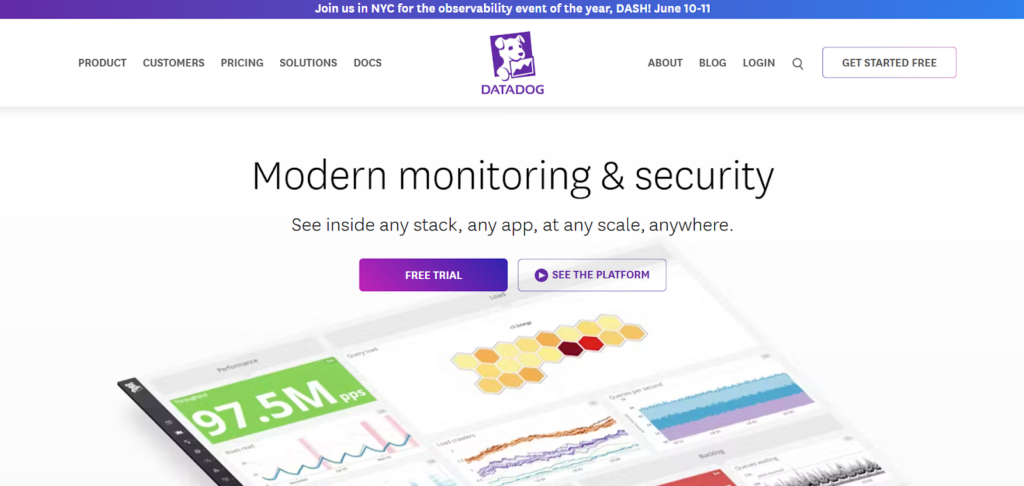
Datadog is a complete infrastructure monitoring solution developed for IT teams that require automation, API access, and extensive data analysis capabilities. It offers more than 350 connectors, customizable dashboards, and alerting features, making it suitable for enterprises of all sizes. The free plan offers basic data gathering and visualization, community assistance, 1-day metric retention, and monitoring for up to 5 hosts.
Webmin
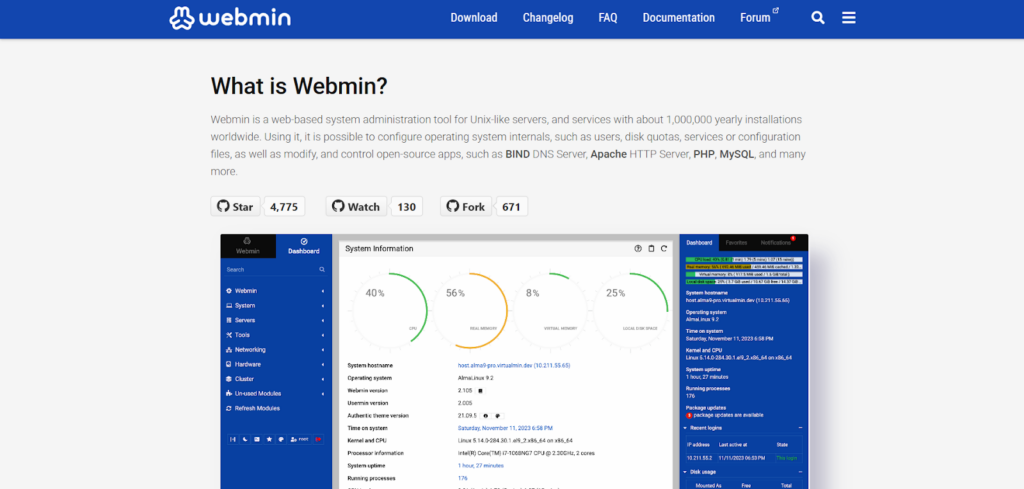
Webmin is an open-source, web-based control panel for Unix-like systems, offering a graphical interface for system administration tasks. It allows remote management of servers with ease.
Prometheus
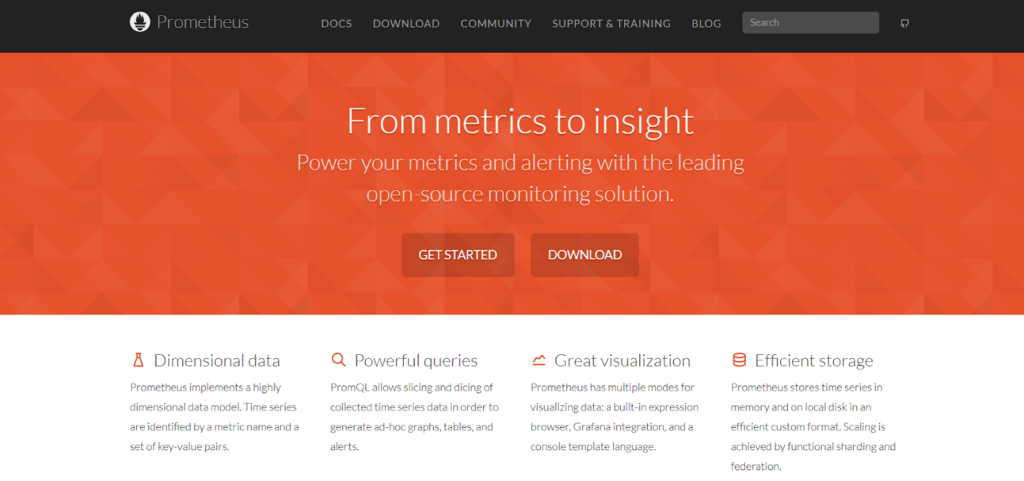
Prometheus is an open-source monitoring system designed for modern cloud-native setups. It supports large-scale systems and integrates well with Kubernetes.
Key Features:
- Time-series data collection with multi-dimensional queries;
- Scalable and efficient performance;
- Built-in alerting with customizable thresholds;
- Integrates with Grafana for visualizations.
Grafana (Used with Monitoring Tools)

Grafana is a visualization platform designed to display data from sources like Prometheus, InfluxDB, and others. It is widely used for creating detailed and customizable dashboards.
Key Features:
- Flexible dashboards and visualizations;
- Supports integration with various data sources;
- Alerting and notification features;
- Extensive library of community-supported plugins.
Cockpit
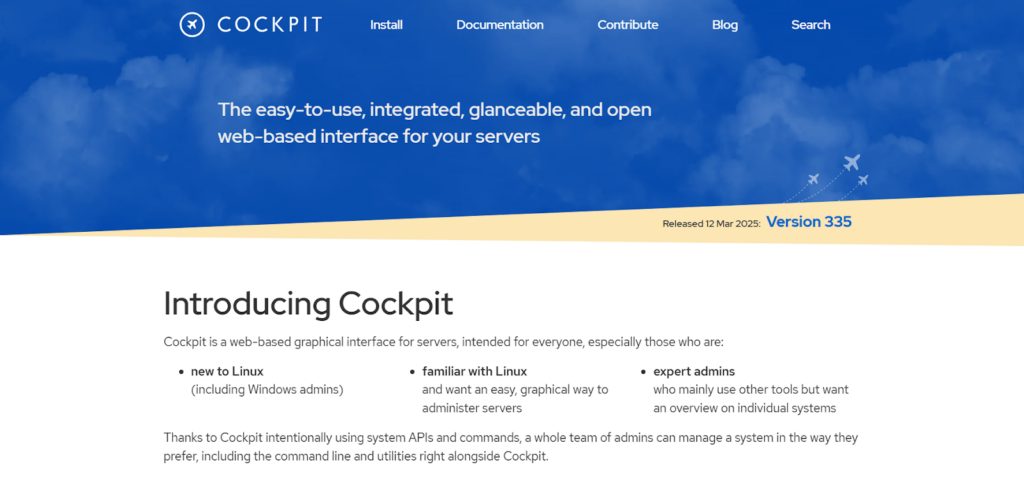
Cockpit is a browser-based graphical administration tool for Linux servers. It enables users to manage daily administrative tasks directly from a web interface. This open-source platform offers multi-functional server monitoring features.
Monit
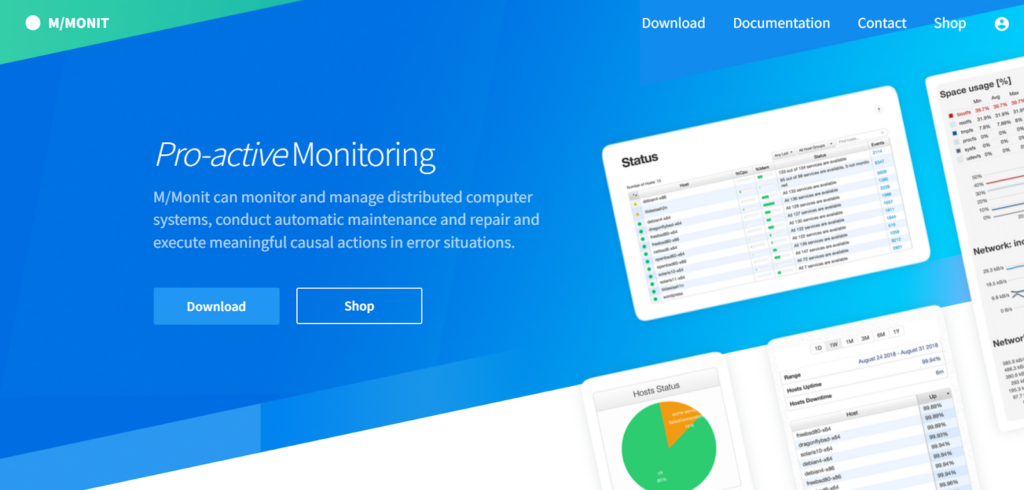
Monit is a lightweight tool designed to monitor system resources and processes. It is easy to set up and works well for smaller systems or setups. Monit tracks processes, services, and resource usage, helping ensure everything runs smoothly. It can automatically restart any failed processes to maintain stability. The tool also offers a web interface for quick status checks and sends email notifications when issues are detected.
Netdata
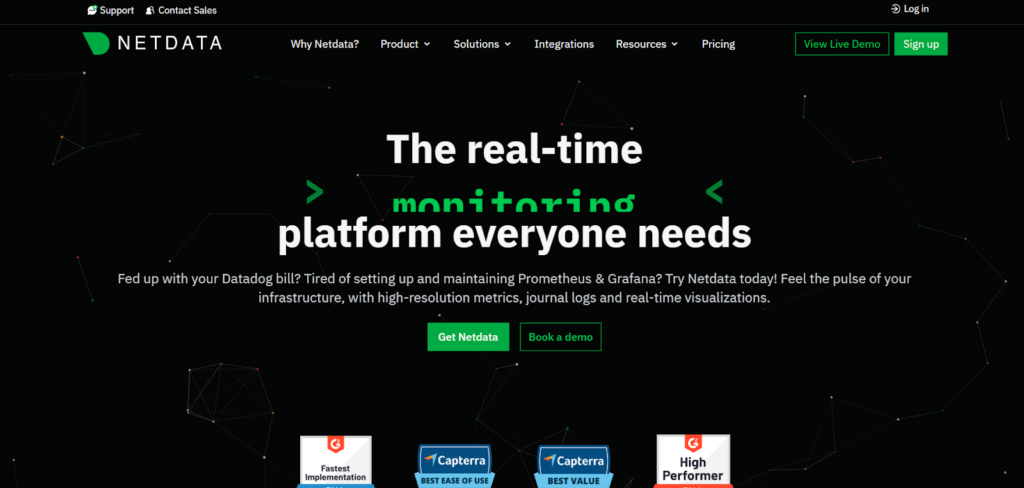
Netdata is an open-source monitoring solution supported by a large community of contributors. It offers real-time monitoring with thousands of per-second metrics, insightful visualizations, and health alerts—ready to use with minimal configuration.
Servers can be connected directly without the need for a VPS. Metrics are accessible through a web dashboard, and notifications are triggered for unusual resource usage.
Key Features:
- Real-time data collection and visual displays;
- Simple setup with no configuration required;
- Minimal resource consumption;
- Ready-to-use support for Linux systems.
Linux Dash
Linux Dash is a clean, web-based open-source monitoring dashboard that displays essential server metrics. It provides system status, network information, user account details, and information about installed applications.
Checkmk
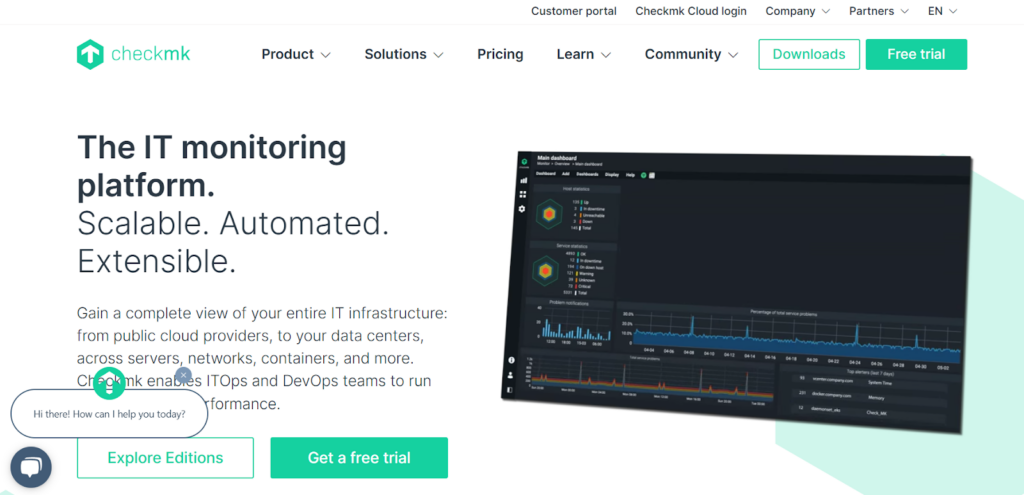
Checkmk is an open-source monitoring platform for networks, servers, cloud services, containers, and applications. It also offers SSL certificate monitoring. The Raw Edition is free and open source, while the Enterprise Edition is available as a 30-day trial.
OpenNMS
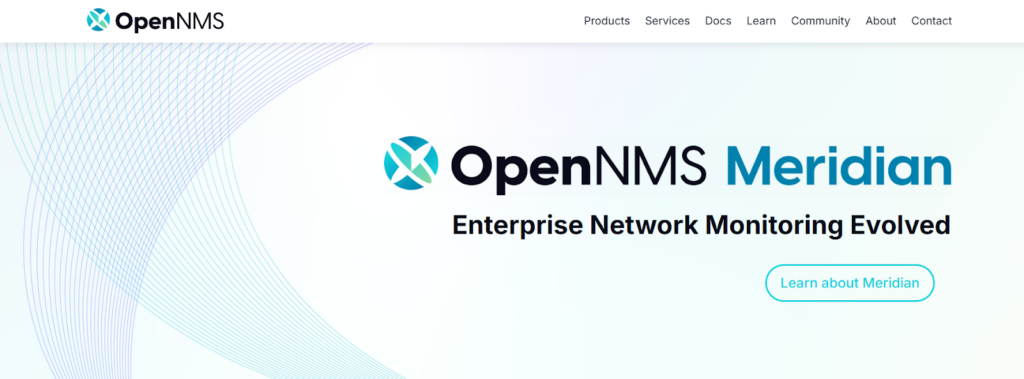
OpenNMS is an enterprise-grade network management platform. It comes in two versions: OpenNMS Horizon (open-source) and OpenNMS Meridian (subscription-based).
Last9
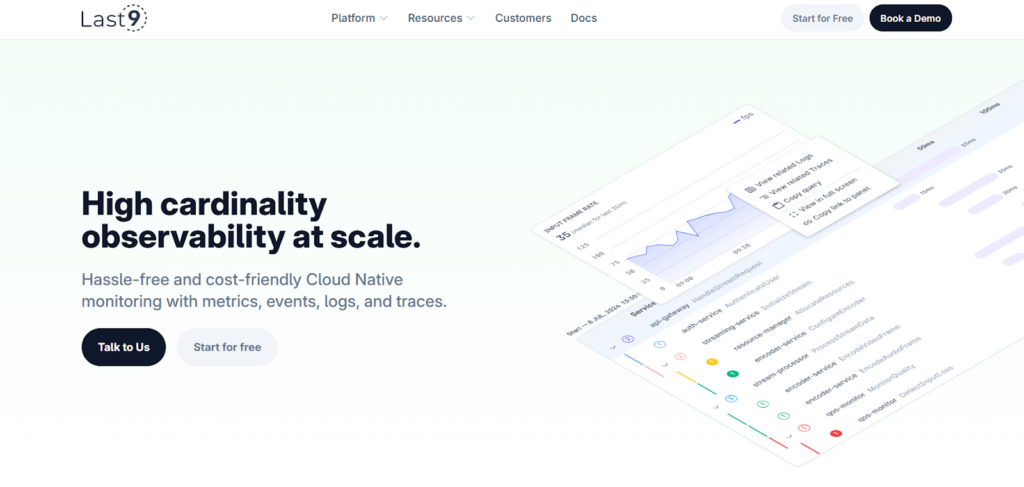
Last9 is an observability platform that displays metrics, logs, and traces in one view. It enables teams to monitor systems, handle warnings, and ease troubleshooting for complicated systems.
The platform connects with technologies such as Prometheus and OpenTelemetry, providing precise information about system performance and problems. It is ideal for teams working with distributed systems and microservices.
Key Features:
- End-to-end observability with metrics, logs, and traces;
- Integration with Prometheus, OpenTelemetry, and other tools;
- Customizable interface for improved monitoring;
- Scalable telemetry storage for efficient data management;
- Real-time alerting and troubleshooting support.
Nagios

Nagios is a long-established and reliable monitoring solution for Linux systems. It offers a high level of customization and supports a wide range of plugins to monitor various system components.
Key Features:
- Real-time monitoring of systems, networks, and applications;
- Large library of available plugins;
- Alert notifications through email, SMS, or integrations;
- Customizable dashboards for easier monitoring.
Icinga
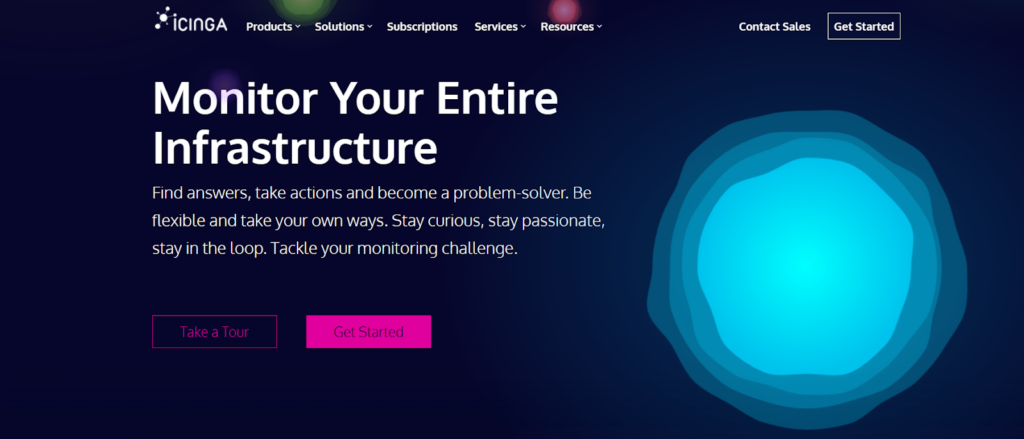
Icinga is an open-source monitoring tool that originated as a fork of Nagios. It offers robust monitoring of networks and systems. Users can start with Icinga’s official getting started resources.
Key Features:
- Monitors systems, networks, and applications;
- Customizable notifications and alerts;
- Supports plugin extensions;
- User-friendly and modern dashboard.
Sensu
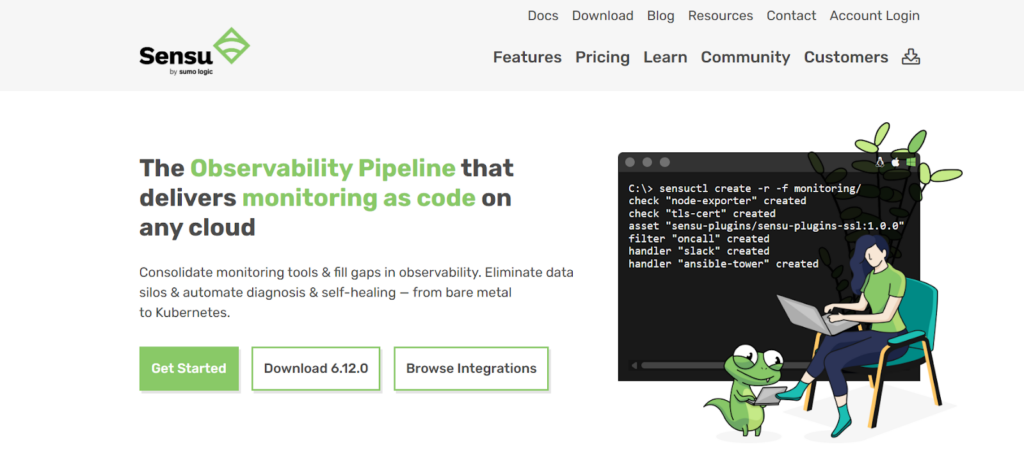
Sensu is a monitoring solution designed to bridge gaps between metrics, logging, and tracing. Sensu Go offers strong features under its open-source license and supports up to 100 nodes in its free plan. Comprehensive documentation is available to help deploy Sensu in production systems.
LibreNMS
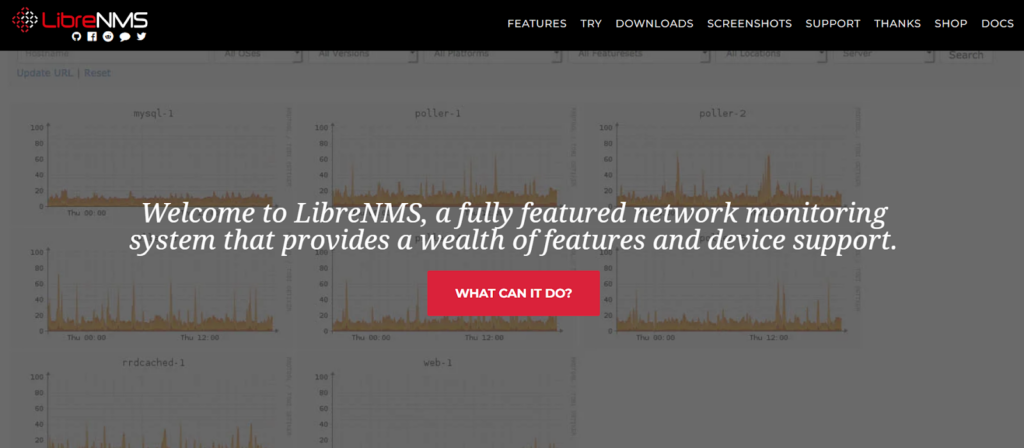
LibreNMS is a fully-featured open-source network monitoring system that supports a wide range of network devices and operating systems, including Cisco, Linux, FreeBSD, Juniper, and more.
NodeQuery
NodeQuery provides visibility into server health, availability, and performance. It uses a lightweight Linux agent to collect server data, which is then processed for monitoring insights.
Munin
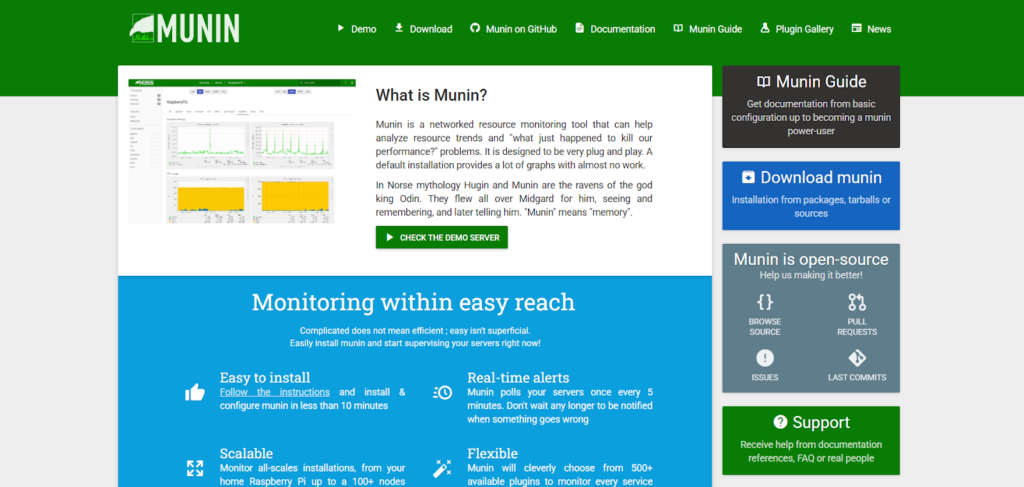
Munin is a free open-source monitoring program that tracks system performance, network traffic, and infrastructure health. As a self-hosted solution, it enables effective monitoring of Linux servers, networks, and numerous applications and services.
Uptime Robot

Uptime Robot continuously monitors websites and alerts users of any downtime. It functions similarly to Better Uptime and offers a simple monitoring solution.
Sysdig
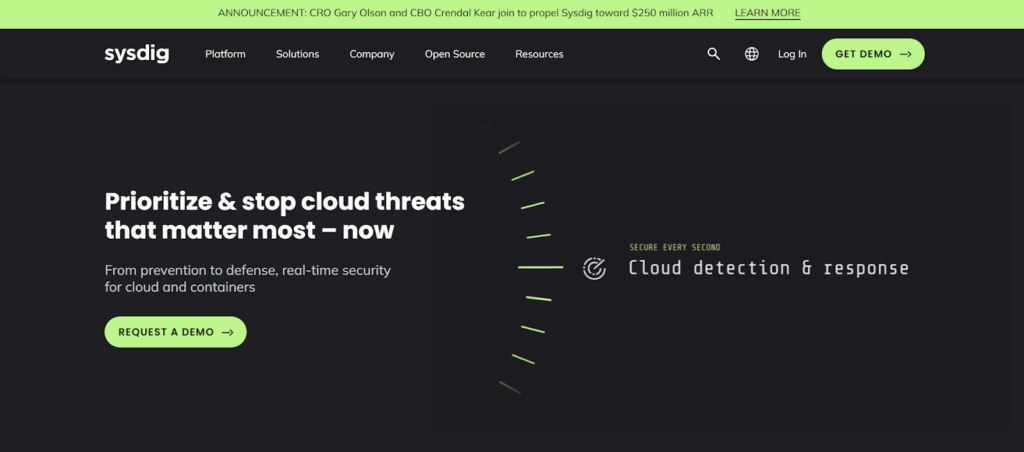
Sysdig is designed for cloud-native setups with a focus on container monitoring and system performance analysis. It also provides security insights to support infrastructure management.
Key Features:
- Real-time monitoring of metrics and security events;
- Supports containers and Kubernetes;
- Visualization tools and alerting capabilities;
- Built-in tools for troubleshooting.
Uptime.com

Uptime.com monitors website availability at one-minute intervals from 30 global locations. It provides alerts via SMS, phone calls, or email. Pricing is structured across basic, superior, business, and enterprise plans.
Zabbix
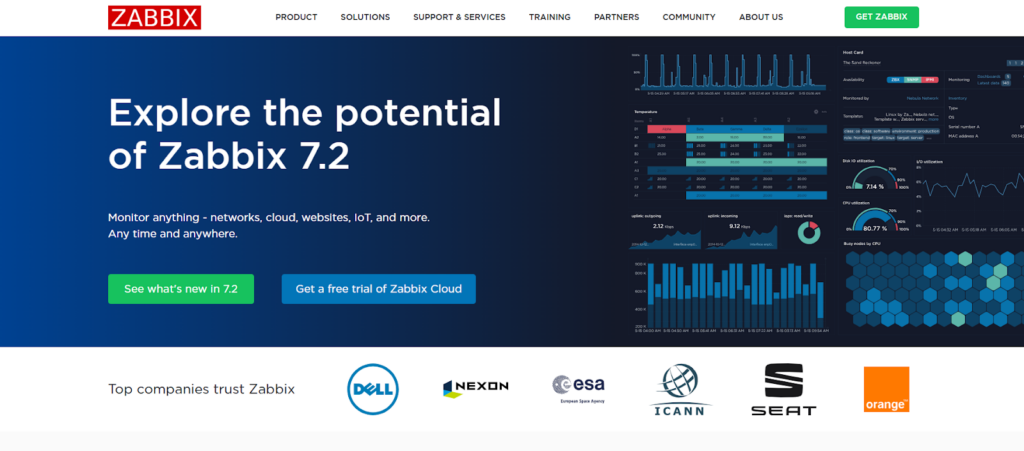
Zabbix is an enterprise-level monitoring solution that supports Linux, Windows, and various other platforms. It is widely recognized for its scalability and adaptable features.
Key Features:
- Supports both agent-based and agentless monitoring;
- Advanced alerting and detailed reporting;
- Visualizations through graphs, maps, and dashboards;
- Predictive analytics for identifying trends.
Supervisord
Supervisord is a client-server process control system for Unix-like operating systems, designed for managing multiple processes. It is Python-based, with a GoLang version also available on GitHub for advanced users.
Graphite

Graphite is an open-source monitoring tool that stores numerical time series data and generates graphs on demand. It works well with both simple hardware and cloud architecture, making it perfect for monitoring websites, apps, corporate services, and networked servers. Graphite made server monitoring easier by facilitating the storing, retrieval, sharing, and display of time-series data.
Cabot
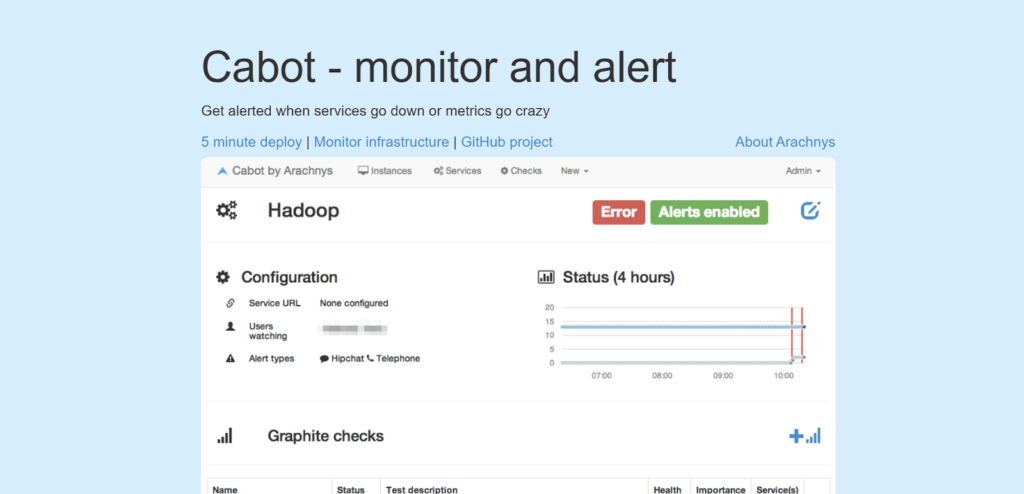
Cabot is a self-hosted, open-source infrastructure monitoring software that incorporates functionality from PagerDuty, Server Density, Pingdom, and Nagios—without the expense or complexity. It supports Docker deployment and can be set up in minutes.
Glances
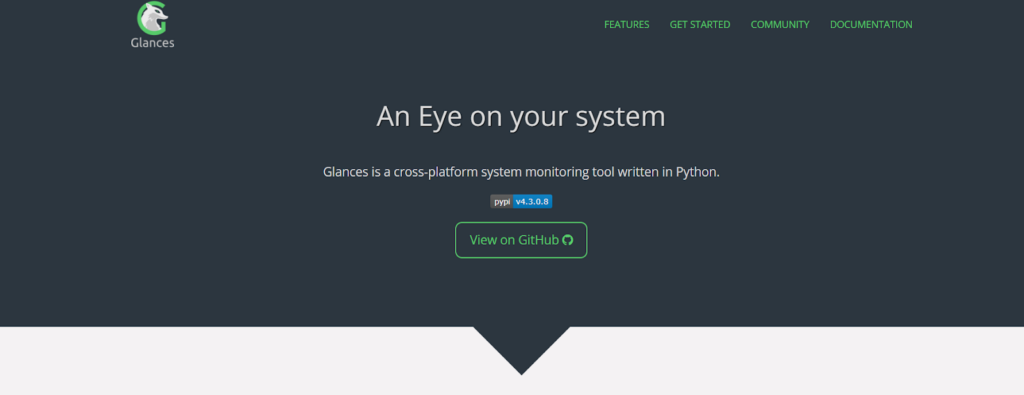
Glances is a Python-based system monitoring tool that operates across multiple platforms. Unlike the traditional ‘top’ command, it offers a web interface for easier access. Glances can function in client/server mode, allowing remote monitoring through the terminal, web browser, or API. Additionally, it supports exporting collected data to external files or databases for further analysis.
Atop
Atop is a command-line Linux monitoring program that watches resource use and evaluates process performance. It gives detailed insights into CPU, memory, storage, and network utilization, as well as the ability to gather and analyze past data.
One of the key advantages of Atop is its lightweight design and efficiency, making it a reliable alternative for performance debugging. It provides comprehensive data, which is important for identifying specific system bottlenecks.
However, Atop does have certain limits. It lacks graphical visualization options, perhaps making it less user-friendly for individuals who like visual dashboards. Furthermore, people who are unfamiliar with command-line interfaces may find them difficult to utilize.
Pydash
Pydash is a lightweight web-based monitoring dashboard built with Python, Django, and Chart.js. It provides an overview of Linux server performance while requiring minimal dependencies, making it simple to deploy and use.
Monitorix
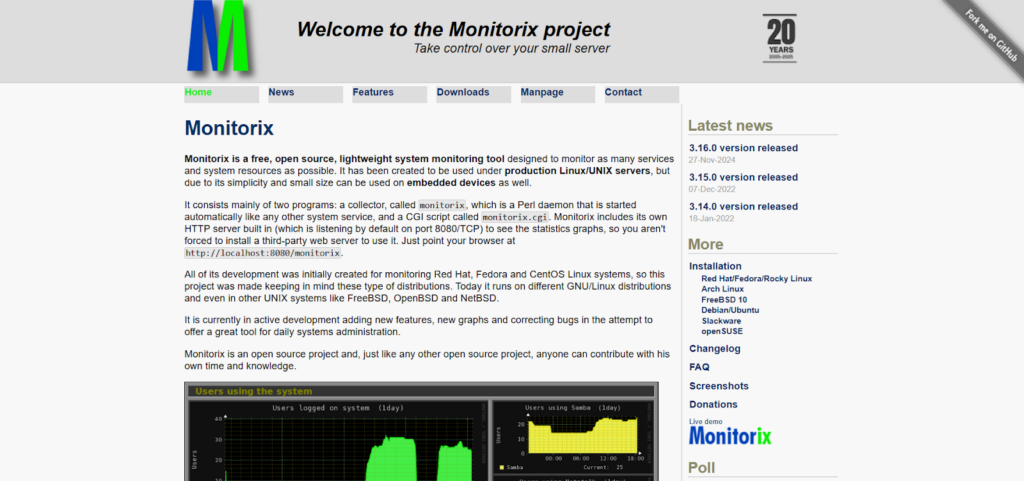
Originally designed for Red Hat-based systems, Monitorix is now compatible with multiple Linux distributions and UNIX systems. It is free, open source, and lightweight, making it suitable for both production servers and embedded devices.
Monitorix provides graphical reports on a wide range of system metrics, including:
- CPU load and usage;
- Kernel activity;
- Filesystem usage and I/O;
- Network traffic and connections;
- Process statistics;
- Mail, FTP, Apache, MySQL, BIND, Chrony, Redis, and PHP-FPM statistics;
- User sessions and system service demand.
Nixstats
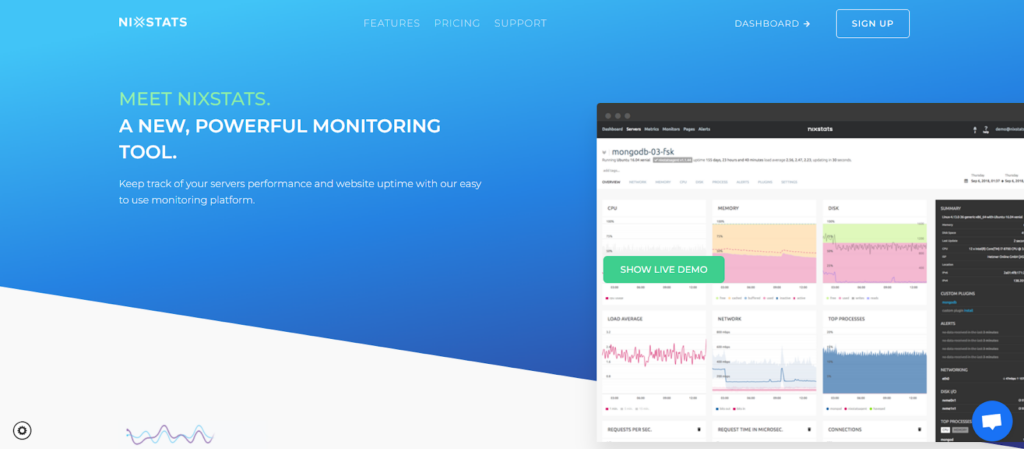
Nixstats offers an easy-to-use monitoring platform for tracking server performance and website uptime. The agent installs quickly with a single command, enabling immediate monitoring. It’s a trusted solution used by companies like Disney.
Cacti

Cacti is an open-source framework designed for operational monitoring and network graphing. It uses RRDTool for storing and visualizing time-series data. Key features include:
- Remote and local data collection;
- Automated device discovery and graph creation;
- Templating for graphs and devices;
- Custom data collection options;
- User and group access controls.
Shinken
Shinken is an open-source monitoring framework inspired by the simplicity of Linux. It features an independent web interface with its own web server, making deployment straightforward. Configuration is handled directly within the main Shinken configuration file.
Observium
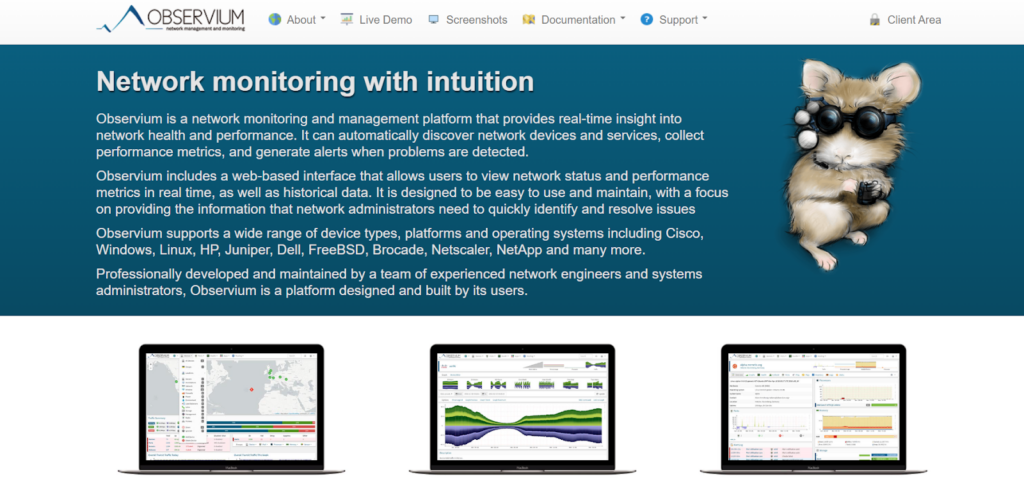
Observium is a network monitoring platform that works with a broad variety of hardware and operating systems, including Cisco, Windows, Linux, HP, Juniper, and more. It supports auto-discovery and has a straightforward interface for monitoring network health and status.
Available in two editions:
- Community Edition – Free, updated bi-annually;
- Subscription Edition – Includes additional features, daily updates, and SVN-based updates.
Puppet

Puppet is a configuration management tool that helps automate server setup and maintenance using a DevOps approach. It is available as Open Source or Puppet Enterprise. The Puppet Server runs on the JVM and manages configuration data for multiple Puppet agent nodes.
Zenoss
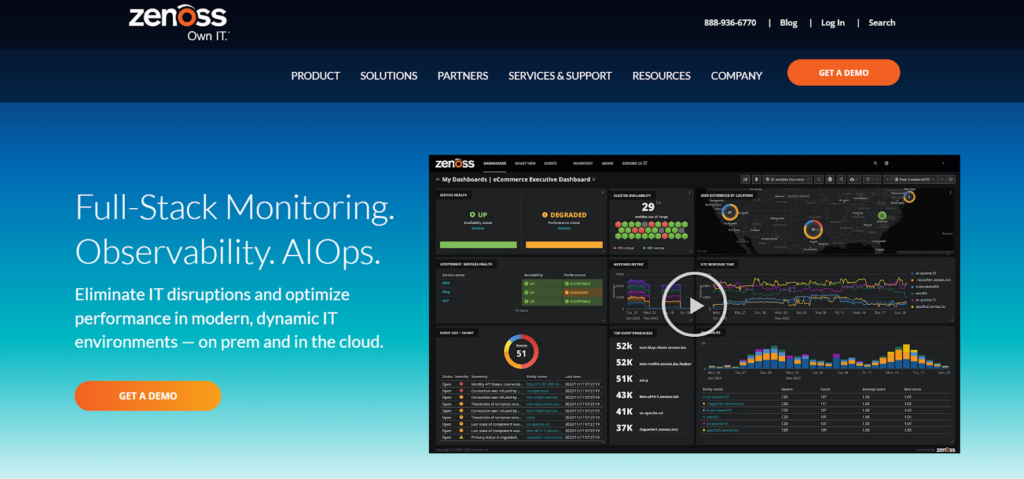
Zenoss provides comprehensive server monitoring as part of a complete IT infrastructure stack, covering both cloud and on-premises systems. Its flexibility comes from ZenPacks—extensible plugins that use standard APIs and protocols like SNMP, WMI, and SSH. ZenPacks supports a wide range of technologies, including physical systems, containers, cloud services, and applications.
ntopng
ntopng is a web-based traffic analysis and flow collection tool, offering a modern version of the original ntop. It supports high-speed data processing and detailed traffic monitoring using libpcap/PF_RING. Available in four versions—Community (free), Professional, Enterprise M, and Enterprise L.
Key Infrastructure Monitoring Areas and Deployment Options
Virtual System Monitoring
Monitoring virtual systems is essential for maintaining the performance of virtual machines (VMs), containers, and hypervisors. For VMs, monitoring tools track CPU usage, memory, disk I/O, and network traffic.
Container monitoring focuses on resource usage, uptime, and network performance to avoid slowdowns or resource shortages. Hypervisor monitoring, covering platforms like VMware and Hyper-V, helps assess overall infrastructure health, resource allocation, and host performance.
Tracking resource distribution ensures CPU, memory, and storage are properly assigned, preventing conflicts or inefficient usage.
Application Performance Monitoring (APM)
APM tools help monitor application health and performance. They track response times, error rates, and throughput for web applications, ensuring smooth operation and minimal downtime.
Database monitoring checks for slow queries, timeouts, and resource usage, while service availability monitoring alerts teams if any service fails. API performance monitoring ensures reliable communication between internal and external services.
Deployment Options
Monitoring solutions support various deployment methods based on infrastructure needs:
- On-Premises: Installed within the company’s data center for full control over data and configurations, ideal for sensitive systems or operations;
- Cloud-Based: Offers flexibility and reduced maintenance by running in the cloud, suitable for cloud-native and distributed systems;
- Hybrid: Combines both on-premises and cloud monitoring, providing control and scalability;
- Multi-Node: Supports distributed monitoring across multiple servers or nodes, making it suitable for large systems and microservices.
Essential Features for System Administrators
System administrators should prioritize monitoring tools that offer:
- Automated alerts;
- Performance reporting;
- Resource usage dashboards;
- Root cause analysis;
- Outage prevention features.
Conclusion
Monitoring Linux servers is important for maintaining performance, availability, and security. Various tools are available for both basic and complex infrastructure needs. These tools offer features like real-time metrics, alerts, dashboards, and support for cloud-based systems. Choosing the right solution helps reduce manual tasks, improve issue detection, and keep systems running reliably.
Posted in blog, Monitoring
Alex Carter
Alex Carter is a cybersecurity enthusiast and tech writer with a passion for online privacy, website performance, and digital security. With years of experience in web monitoring and threat prevention, Alex simplifies complex topics to help businesses and developers safeguard their online presence. When not exploring the latest in cybersecurity, Alex enjoys testing new tech tools and sharing insights on best practices for a secure web.
